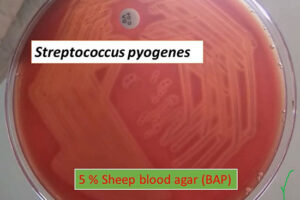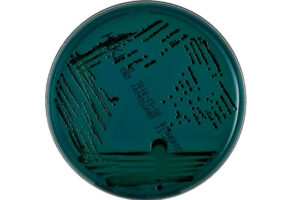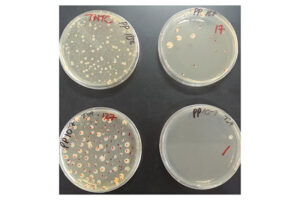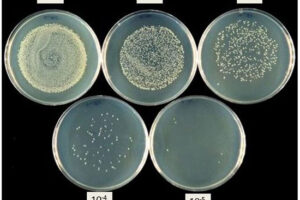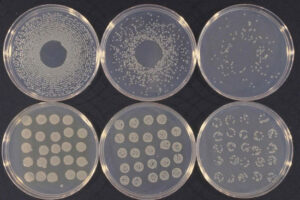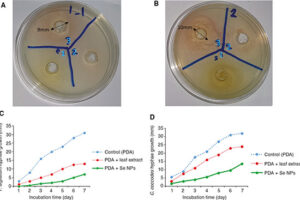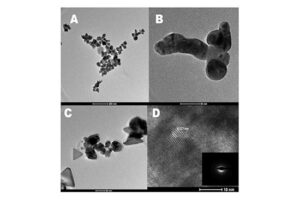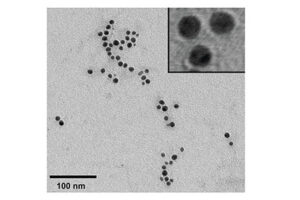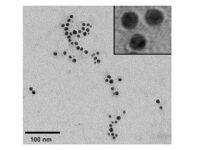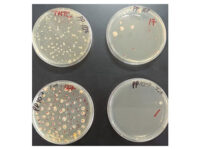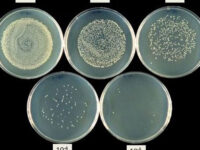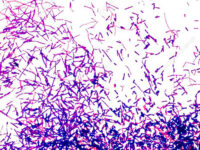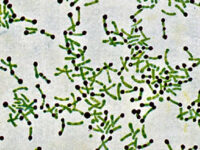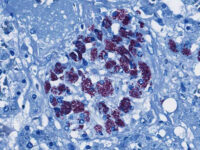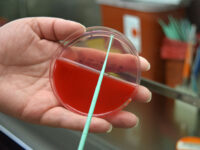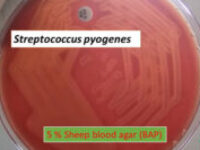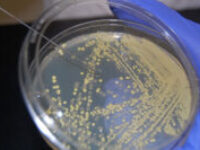microbiology services
Microbiological services
Different types of services that can be provided in the microbiology unit of Histogenotech Scientific Research Center :
- Isolation and differential-selective culture of microorganisms
- Perform phenotypic tests to identify microorganisms and colony count
- Performing biochemical, serological and molecular tests in the detection of microorganisms
- Perform antibiotic susceptibility tests (M.B.C, M.I.C, Disk diffusion)
- Evaluation of biofilm production capacity and biofilm measurement
- Investigation of microbial contamination in different samples (food, water and…)
- Synthesis of microbial nanoparticles and investigation of the effect of nanoparticles on microorganisms
- Isolation and purification of probiotics
- Plasmid purification, vector design and cloning
- Perform general and specific staining to check for the presence of microorganisms
- Performing colony count test (counting the number of colonies) by spreading method in culture medium
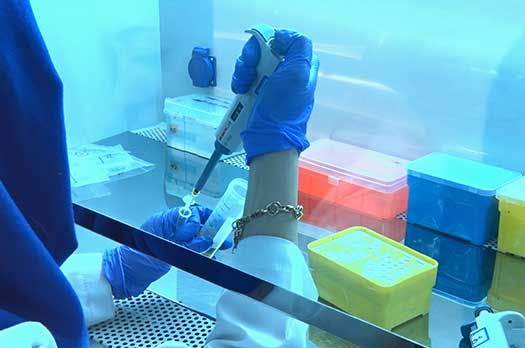
Microbiology is the study of microscopic organisms such as bacteria, viruses, fungi, and protozoa in the domain of prokaryotes and eukaryotes. In addition to the tremendous importance of microbiology in pathogenesis and medical science, the importance of these organisms in industry, food and the environment is also clear.
Histogenotech Scientific Research Center with the benefit of top experts, The most up-to-date devices and the latest research done in the world, has sought to advance in this important biological field and trying to define projects with high production priority and up-to-date services to researchers

Microbial Studies Services
Isolation and Differential Culture – Selective Microorganisms
The first step in detecting microorganisms is the ability to isolate them from different samples which is done by sampling and differential and selective culture. Histogenotech microbiology laboratory with suitable facilities has ability to isolate and cultivate different types of bacteria and fungi. In addition, the Histogenotech Laboratory of Microbiology has expanded its services for the isolation, culture and identification of some viruses.

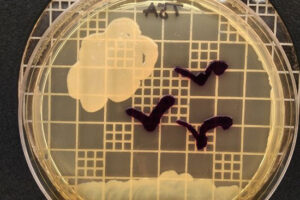
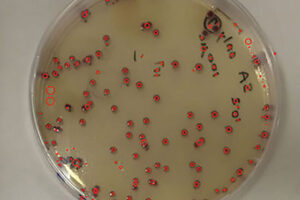
Phenotypic tests (identification) of microorganisms and colony count
Microscopic and macroscopic examination can distinguish microorganisms from different samples and this step can be a key and important step in tracking microorganisms. In Histogenotech, detection of microorganisms usually provided by staining and for macroscopic detection of microorganisms from culture characteristics such as type, shape, color, arrangement as well as odor. count of bacterial colonies used to monitor the healing process of infection or food contamination
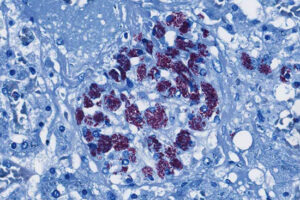

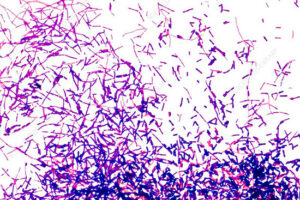
Perform general and specific staining to detection of microorganisms
The quickest way to detection a microorganism is microscopic observation on a slide with a stain. In microbiology, general staining used for the observation of microorganisms and specific staining used to observe a specific bacterium or a specific structure. The Histogenotech microbiology unit with the benefit of up-to-date equipment and its specialists is ready to provide Gram staining services, Welch, Fulgen, acid-fast staining (Zill-Nelson and Cayenne), Staining of protozoa and worm eggs (trichrome and…), staining of fungi (white calciflora and…), and observation of intracellular bacteria by Wright, Giemsa and Gimenez staining methods.
Performing colony count test (counting the number of colonies) by spreading method in culture medium
The colony count test is used to check the number (load) of bacteria in the sample. Colony count test is used to check the contamination of different samples such as water, food, clinical sample of the patient. It also examines the response of a microorganism to treatment with a particular drug. The Histogenotech microbiology laboratory is ready to present the fully analyzed results to the researchers using the common technique of spreading the sample in the environment (Spread-plating).
Synthesis of microbial nanoparticles and study of the effect of nanodrugs on microorganisms
With the advancement of science and the clarification of different research fields, the importance of nanotechnology science is becoming more and more clear. Extraction of natural nanoparticles from different bacteria Synthesis of polymer and metal nanoparticles by microbial derivatives, also, the study of the effects of nanoparticles in the fight against microorganisms is in the cutting edge of science. Histogenotech Microbiology Laboratory with its nanotechnologists and microbiologists, had A big step in providing the production of polymer and metal nanoparticles and evaluating the effectiveness of such materials. It has also passed their confirmation tests (including FESEM, SEM, TEM, DLS and ZETA size) and is ready to provide services.
One of the most important tests to evaluate the susceptibility and antibiotic resistance of pathogenic bacteria as well as antimicrobial effects of nanoparticles, plant extracts and various scaffolds, Use of antibiotic susceptibility and resistance tests based on diffusion in the environment. Histogenotech microbiology laboratory due to the benefit of its rich antibiotic bank Perform all these tests for researchers.
In many tests to check antibiotic resistance and sensitivity, it is important to obtain a resistance threshold and to accurately assess the concentration of bactericidal. Therefore, dilution tests are important. The Histogenotech Microbiology Laboratory, with its experienced specialists, is ready to provide services and perform MIC and MBC tests for researchers.
Biofilm formation in microbial populations in infection is like a disaster. The importance of bacterial biofilm structures in nosocomial infections and antibiotic resistance needs to be examined more closely. In Histogenotech microbiology unit, biofilm is measured by microplate plate (MTP) method using crystal violet in phenotypic terms. Also, the existence and expression of genes involved in biofilm production is provided for researchers and students in this laboratory.
In the Histogenotech microbiology laboratory, all tests related to biochemical analysis (fermentation of sugars, study of enzymes, study of metabolic pathways and evaluation of sensitivity and resistance to chemicals), Serological examination (use of antigen and antibody reactions in different methods in the diagnosis of microorganisms) As well as the study of molecular tests to detect slow-growing and hard-growing organisms and the contamination of various materials such as contaminated cell culture media and…. Done.
Investigation of microbial contamination in different water and food samples in industry and their environment and also, the origin of various infections and diseases needs to be investigated which can be done in two ways: microbial (culture of microorganisms) and molecular for different types of microorganisms. At the Histogenotech Microbiology Laboratory, we are ready to serve researchers in the field using rich microbial banks as well as advanced research equipment.
The production of enzymes and various substances by microorganisms due to their physiological and genetic characteristics has long been of interest to many researchers in biotechnology, pharmacy and industrial microbiology. In response to this important and to meet the needs of researchers in this field, another service of Histogenotech microbial laboratory is plasmid isolation and purification, expression vector design and cloning in different hosts.
Probiotics are a microbial population of normal human body flora that can be used to supplement the microbial population of the human body. Today, the importance of probiotics in the prevention of diseases such as autoimmune diseases, skin diseases, cancer, Covid-19 disease, as well as the importance of probiotics in various industries such as livestock and poultry has been identified. Histogenotech, with the help of efficient specialists and up-to-date technology, has provided probiotic isolation, purification and identification services for students and researchers.
Perform antibiotic susceptibility testing based on diffusion disk diffusion (DDM)
Disk diffusion method for evaluation of antimicrobial drugs susceptibility
One of the most important tests to evaluate the susceptibility and antibiotic resistance of pathogenic bacteria as well as antimicrobial effects of nanoparticles, plant extracts and various scaffolds, Use of antibiotic susceptibility and resistance tests based on diffusion in the environment. Histogenotech microbiology laboratory due to the benefit of its rich antibiotic bank Perform all these tests for researchers.
Dilution test for antibiotic susceptibility test (MIC, MBC)
Dilution methods for evaluation of antimicrobial drugs susceptibility
In many tests to check antibiotic resistance and sensitivity, it is important to obtain a resistance threshold and to accurately assess the concentration of bactericidal. Therefore, dilution tests are important. The Histogenotech Microbiology Laboratory, with its experienced specialists, is ready to provide services and perform MIC and MBC tests for researchers.
Investigation and evaluation of biofilm production capacity
Biofilm assay
Biofilm formation in microbial populations in infection is like a disaster. The importance of bacterial biofilm structures in nosocomial infections and antibiotic resistance needs to be examined more closely. In Histogenotech microbiology unit, biofilm is measured by microplate plate (MTP) method using crystal violet in phenotypic terms. Also, the existence and expression of genes involved in biofilm production is provided for researchers and students in this laboratory.
Perform biochemical, serological and molecular tests in the diagnosis of microorganisms
In the Histogenotech microbiology laboratory, all tests related to biochemical analysis (fermentation of sugars, study of enzymes, study of metabolic pathways and evaluation of sensitivity and resistance to chemicals), Serological examination (use of antigen and antibody reactions in different methods in the diagnosis of microorganisms) As well as the study of molecular tests to detect slow-growing and hard-growing organisms and the contamination of various materials such as contaminated cell culture media and…. Done.
Investigation of microbial contamination in different cellular, aqueous and food samples
Investigation of microbial contamination in different water and food samples in industry and their environment and also, the origin of various infections and diseases needs to be investigated which can be done in two ways: microbial (culture of microorganisms) and molecular for different types of microorganisms. At the Histogenotech Microbiology Laboratory, we are ready to serve researchers in the field using rich microbial banks as well as advanced research equipment.
Plasmid purification, vector design and cloning
The production of enzymes and various substances by microorganisms due to their physiological and genetic characteristics has long been of interest to many researchers in biotechnology, pharmacy and industrial microbiology. In response to this important and to meet the needs of researchers in this field, another service of Histogenotech microbial laboratory is plasmid isolation and purification, expression vector design and cloning in different hosts.
Isolation and purification of probiotics
Probiotics are a microbial population of normal human body flora that can be used to supplement the microbial population of the human body. Today, the importance of probiotics in the prevention of diseases such as autoimmune diseases, skin diseases, cancer, Covid-19 disease, as well as the importance of probiotics in various industries such as livestock and poultry has been identified. Histogenotech, with the help of efficient specialists and up-to-date technology, has provided probiotic isolation, purification and identification services for students and researchers.
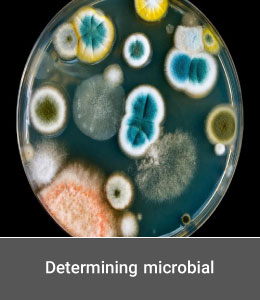
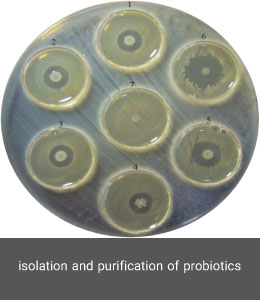
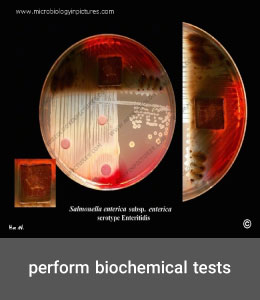
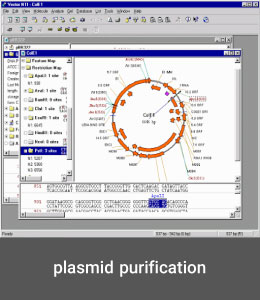
You may find the answer to your question
Frequently Asked Questions by Customers
Yes. To maintain the microbial agent, it is enough to use a liquid-rich culture medium such as tryptosoy broth or heart-brain infusion broth. After placing the required number of bacteria, glycerol is used to prevent the bacteria from being destroyed by the freezing. If we want to keep the microbial agent for a few months, the temperature is -20 degrees Celsius, and for annual storage, -80 degrees is used.
Transfer of isolated and purified microbial samples to the laboratory is often done in both fresh and lyophilized forms. If the sample is prepared for lyophilization for transfer, it is often transferred in vacuum ampoules at room temperature. While fresh specimen is transferred to solid or liquid culture medium, refrigeration temperature (refrigeration temperature can be provided by ice pack) should be used. It is important to note that the microbial agent transport container must contain complete information and also be free of any leaks and be transported under standard biosafety conditions.
The most important reasons why a agar-base medium is not rigid well include: The amount of distilled water added is more than the instructions, the amount of weighted powder is less than the amount specified in the instructions, The pH of the medium is not set in the neutral range and the expiration date of the culture medium should be checked.
In microbial studies, in order to use bacteria, it is necessary to know how many microbes we are working on at each stage. For this purpose, half of McFarland is used to standardize concentrations, which, if read at 510 nm with spectrophotometers, will contain 1.5 x 108 bacteria. Half of McFarland is commercially available today and should be kept in the dark to prevent it from shrinking. The efficacy of this solution in microbial susceptibility testing is to prepare a turbidity similar to half of McFarland by the studied bacterium for testing.
To check the size of inhibition zone, it is enough to use a ruler to measure the diameter of the inhibition zone and note it in millimeters. To review and analyze the results, use the CLSI guideline, in which the measured inhibition zone is compared with the world standard, and the sensitivity and resistance are reported in the form of resistance – intermediate – sensitive.
To count the number of colonies, 10 microbial plates are counted in which different dilutions of the sample are spread. The countable number of colonies is often between 30-300 colonies and for final report, the results of colony count should be reported in CFU / gram or CFU / mL (depending on whether the sample is liquid or solid). The CFU is the standard colony count unit reported for each bacterium.
To obtain the minimum concentration of bactericidal and bacteriostatic concentration of a drug, it is sufficient to culture a sample of the last tube without turbidity in the macrobroth dilution test together with two higher concentration tubes separately in a solid culture medium. After 24 hours, we examine its growth in a solid environment. Concentration that has not grown is reported as the minimum bactericidal concentration.
Yes, there are various tests that can measure the antimicrobial properties of plant products. The most common and least expensive is to do a disk diffusion or well-diffusion test. Although up to date there is no standard guideline for it, but the lack of growth can be observed in the agar-based culture medium.
شاید جواب سوال خود را بیابید
سوال های متداول مشتریان
بله. برای نگهداری از عامل میکروبی کافیست از یک محیط کشت غنی مایع همچون تریپتی کیس براث و یا مایع عصاره قلب و مغز استفاده شود. پس قرار دادن تعداد لازم از باکتری، از گلیسرول برای جلوگیری از تخریب باکتری ها به واسطه سرما استفاده می شود. اگر عامل میکروبی را برای چند ماه بخواهیم نگهداری کنیم از دمای منفی 20 درجه سانتیگراد، و برای نگهداری سالیانه از دمای 80- استفاده می شود.
انتقال نمونه میکروبی ایزوله شده و تخلیص شده به آزمایشگاه غالبا به دوصورت تازه (Fresh) و لیوفیلیزه انجام می پذیرد. در صورتی که نمونه به صورت لیوفیلیزه برای انتقال آماده شود اغلب در آمپول های خلا و در دمای اتاق منتقل می شود. در حالی که نمونه تازه بر روی محیط کشت جامد و یا مایع منتقل می گردد، دمای یخچال (ایجاد دمای یخچال توسط پک یخ قابل تامین است) برای آن باید استفاده گردد. ذکر این نکته مهم است که ظرف انتقال عامل میکروبی باید حاوی اطلاعات کامل باشد و همچنین فاقد هرگونه نشتی باشد و در شرایط ایمنی زیستی استاندارد منتقل گردد.
مهم ترین دلایل برای اینکه محیط جامد به خوبی بسته نشده است شامل این موارد است: میزان آب مقطر اضافه شده بیشتر از دستورالعمل است، میزان پودر وزن شده کمتر از میزان مشخص شده در دستورالعمل می باشد، میزان pH محیط به درستی در محدوده خنثی قرار داده نشده است، تاریخ مصرف محیط کشت گذشته و محیط قابل استفاده نمی باشد.
در مطالعات میکروبی برای استفاده از باکتری ها لازم است در هر مرحله بدانیم بر روی چه تعدادی از میکروب در حال انجام کار هستیم. به این منظور برای استاندارد سازی غلظت ها از نیم مک فارلند استفاده می شود که اگر در طول موج 510 اسکپتروفتومتر خوانده شود، حاوی 108* 1.5 باکتری خواهد بود. امروزه نیم مک فارلند به صورت تجاری قابل تهیه است و بهتر است برای جلوگیری از کم شدن کدورت آن، در تاریکی نگهداری شود. کارایی این محلول در تست های بررسی حساسیت میکروبی، تهیه کدورتی مشابه با نیم فارلند توسط باکتری مورد مطالعه برای انجام تست می باشد.
برای بررسی میزان هاله ی ایجاد شده کافیست از خط کش مدرج استفاده شود تا قطر هاله ایجاد شده اندازه گیری و با واحد میلی متر یادداشت شود. برای بررسی و آنالیز نتایج از دستورالعمل CLSI استفاده که هاله اندازه گیری شده با استاندارد جهانی مقایسه شده و میزان حساسیت و مقاومت به شکل مقاوم – مقاومت میانه – حساس گزارش می گردد.
برای شمارش تعداد کلنی میزان 10 پلیت میکروبی که رقت های متفاوتی از نمونه در آن پخش شده شمارش می شود. میزان قابل شمارش کنی ها اغلب بین 30 – 300 کلنی می باشد و در انتها نتایج شمارش کلنی باید به شکل CFU/gram و یا CFU/mL گزارش شود ( بسته به نوع نمونه که مایع است یا جامد). واحد CFU واحد استاندارد شمارش کلنی است که برای هر باکتری گزارش می شود.
برای بدست آوردن کمترین غلظت از آنتی بیوتیک که توان از بین بردن باکتری مورد نظر را دارد، کافیست یک نمونه از آخرین لوله بدون کدورت در تست ماکرو براث دایلوشن را همراه با دو لوله با غلظت بالاتر را جداگانه در یک محیط کشت جامد، کشت دهیم. پس از 24 ساعت، رشد آن در محیط جامد را بررسی می کنیم. غلظتی که رشد نکرده است به عنوان حداقل غلظت کشندگی گزارش می گردد.
بله، تست های متفاوتی وجود دارد که توان اندازه گیری خواص ضد میکروبی فرآورده های گیاهی را بدست آورد. رایج ترین و کم هزینه ترین آن انجام تست دیسک دیفیوژن است. با آنکه تا به امروز دستورالعمل استانداردی برای آن وجود ندارد ولی میتوان میزان عدم رشد را در محیط جامد مشاهده نمود.


